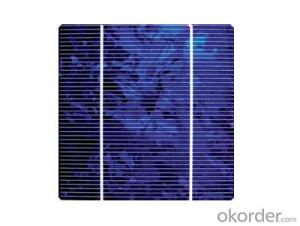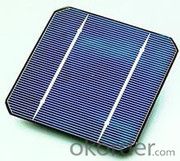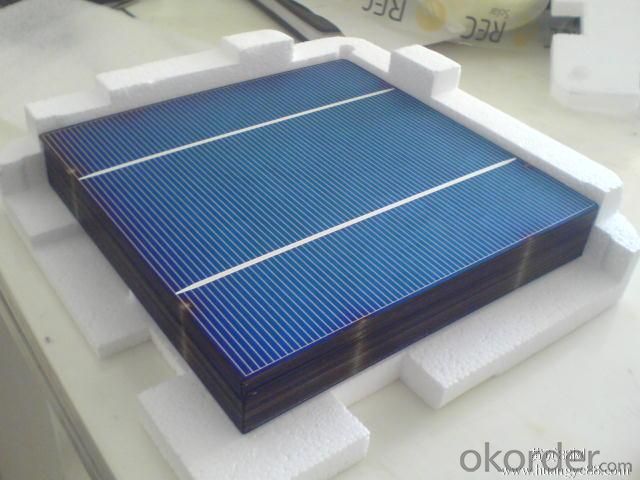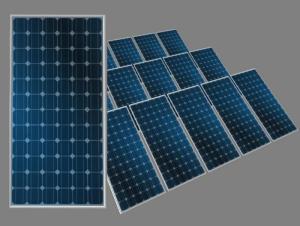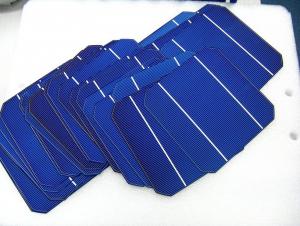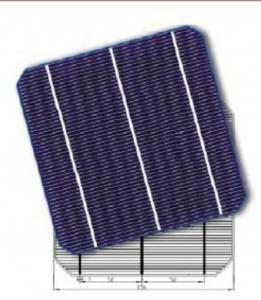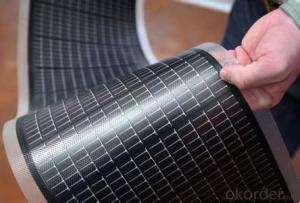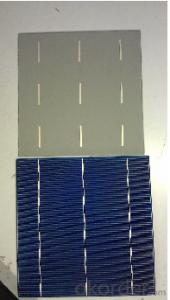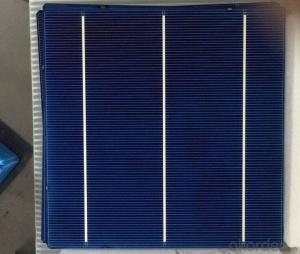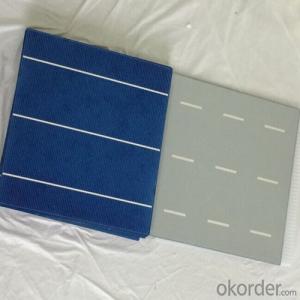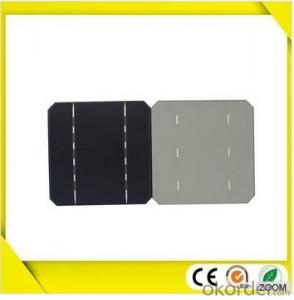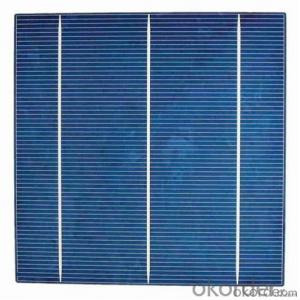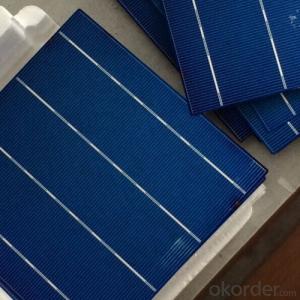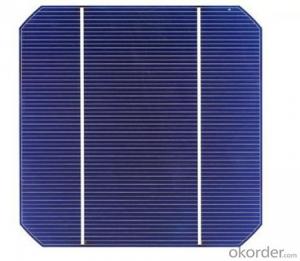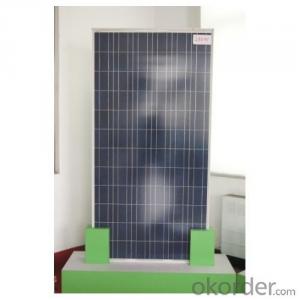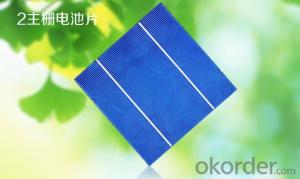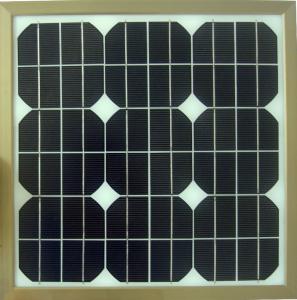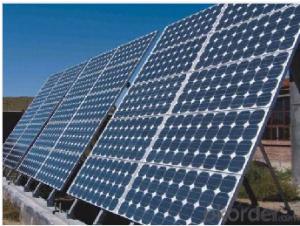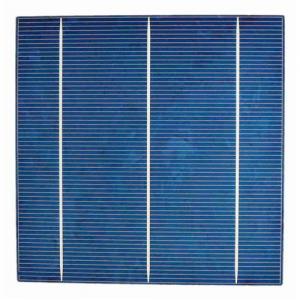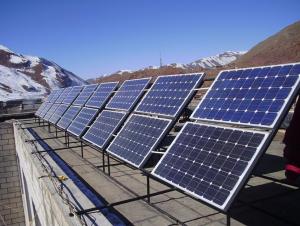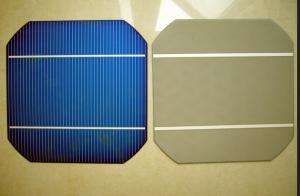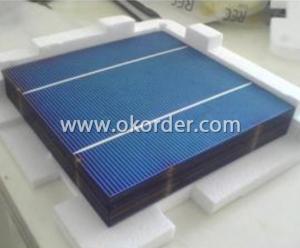5 inch A Grade 2BB GaAs Solar Cell - Cheap, Cell Solar
- Loading Port:
- Shanghai
- Payment Terms:
- TT or LC
- Min Order Qty:
- 1000 watt
- Supply Capability:
- 100000 watt/month
OKorder Service Pledge
OKorder Financial Service
You Might Also Like
| Material: | Monocrystalline Silicon | Size: | 125x125 | Max. Power: | 2.86w |
| Size:: | 125X125mm | Material:: | monocrystalline Silicon | Color: | Dark Blue |
| Max. Power:: | 2.86 watts | efficiency:: | 18.40% | busbar:: | 2 |
| Voltage:: | 0.508V-0.53V | Thickness:: | 190um±20um |
| Packaging & Delivery | |
| Packaging Detail: | 100pcs in one box,1000pcs per carton, standard export carton Cheap Solar cell |
| Delivery Detail: | 3 days after received the payment. |
| Specifications | |
| Cheap Solar cell | |
| 1. mono solar cell | |
| 2. 2.86w | |
| 3.A grade | |
5 Inch A Grade 2BB Solar Cell Cheap , Cell Solar
Product Description
1. High efficiency and High power
2. Long-term electrical stability
3. Low price and Fast delivery
4. 25 years life
Solar cell Electrical Parameters
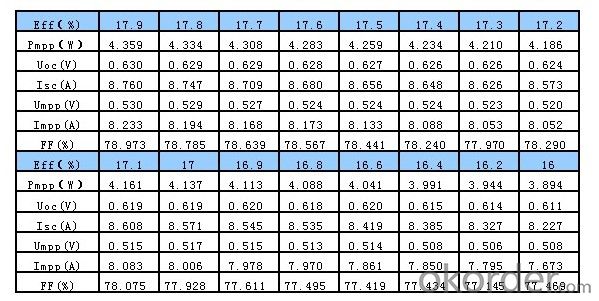
Solar cell I-V Curve
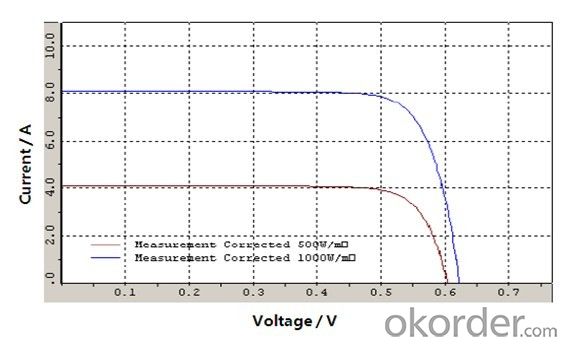
Solar cell Spectral Response
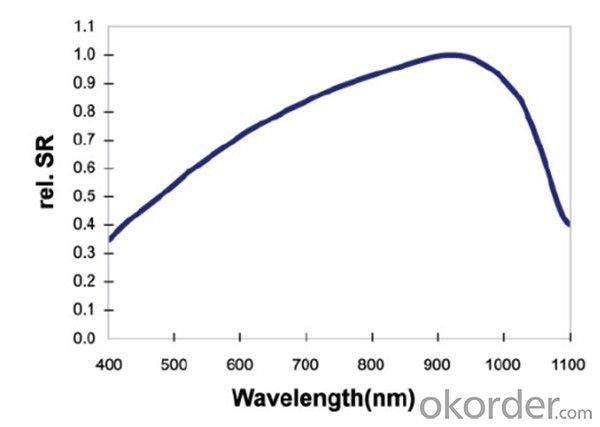
Solar cell Temperature Characteristics
| Name | Unit | Value |
| Current (Isc) | [%/°C] | 0.03 |
| Voltage(Voc) | [%/°C] | -0.35 |
| Power( Pmax ) | [%/°C] | -0.41 |
Intensity Dependence
| Irradiance ( W/m² ) | Voc/mV | Isc/mA |
| 1000 | 1 | 1 |
| 800 | 0.996 | 0.799 |
| 500 | 0.964 | 0.541 |
| 300 | 0.941 | 0.293 |
| 200 | 0.921 | 0.191 |
FAQ
1, What’s price per product ?
A: It’s depends on the quantity, delivery date and payment terms of the order. We can talk further about the detail price issue. Our products is high quality with lower price level.
2, How to make payment?
We accept T/T or L/C.
3, What is your lead time?
Generally 1-5 weeks depends on the order quantity and your specific requirements.
4, Can you do OEM for us?
Yes, we can.
5, How do you pack your products?
We have rich experience on how to pack the panels to make sure the safety on shipment when it arrives at the destination.
- Q: How do solar cells impact greenhouse gas emissions?
- Solar cells have a significant positive impact on greenhouse gas emissions as they generate electricity without producing any greenhouse gases. The use of solar energy reduces our reliance on fossil fuels, which are major contributors to greenhouse gas emissions, thereby helping to mitigate climate change.
- Q: Can solar cells be used in sports stadiums?
- Yes, solar cells can be used in sports stadiums. They can be installed on the roof or integrated into the design of the stadium to capture solar energy and convert it into electricity. This renewable energy source can help power lighting, scoreboards, and other electrical systems, making sports stadiums more sustainable and reducing their carbon footprint.
- Q: Can solar cells be used in recreational vehicles?
- Yes, solar cells can be used in recreational vehicles. They are a popular and effective solution for powering various systems in RVs including lighting, appliances, and electronics. Solar panels can be mounted on the roof of an RV to harness sunlight and convert it into electricity, providing a reliable and sustainable source of power while on the road or during camping trips. Additionally, solar cells offer the advantage of being environmentally friendly and reducing reliance on traditional energy sources.
- Q: How do solar cells perform in areas with high levels of salt spray?
- Solar cells generally do not perform well in areas with high levels of salt spray. The salt particles can accumulate on the surface of the solar cells, reducing their efficiency by blocking sunlight and corroding the electrical components. Regular cleaning and maintenance are required to mitigate the negative impacts of salt spray on solar panels in such areas.
- Q: What is the payback period for installing solar cells?
- The payback period for installing solar cells varies depending on several factors, such as the initial cost of installation, the amount of energy generated by the solar cells, and the cost of electricity in the area. Generally, the payback period ranges from 5 to 15 years, but it can be shorter or longer depending on these factors.
- Q: Can solar cells be used in electric fence systems?
- Yes, solar cells can be used in electric fence systems. Solar panels can generate electricity from sunlight, which can then be stored in batteries and used to power electric fences. This eliminates the need for a connection to the main power grid and makes electric fence systems more flexible and cost-effective in remote areas.
- Q: How does the size of a solar cell affect its performance?
- The size of a solar cell directly affects its performance. Larger solar cells have a higher surface area, allowing them to capture more sunlight and generate more electricity. This results in a higher power output and overall performance compared to smaller solar cells.
- Q: Can solar cells be used in underwater vehicles or submarines?
- Yes, solar cells can be used in underwater vehicles or submarines. However, they have certain limitations due to the reduced availability of sunlight underwater. To overcome this challenge, the solar cells used in these vehicles are usually highly efficient and designed to operate even in low-light conditions. Additionally, the surface area of solar panels may need to be increased to compensate for the reduced sunlight intensity.
- Q: How do solar cells impact local economies?
- Solar cells can have a positive impact on local economies in several ways. Firstly, the installation and maintenance of solar panels create job opportunities, boosting employment rates and income levels in the local community. Additionally, solar energy reduces dependence on imported fossil fuels, which in turn decreases energy costs for businesses and residents, leading to increased savings and disposable income. Moreover, solar power can attract investments and promote the development of local solar industries, thus stimulating economic growth and innovation. Overall, solar cells contribute to a more sustainable and prosperous economy at the local level.
- Q: Can solar cells be used in farming or agriculture?
- Yes, solar cells can be used in farming or agriculture. They can be used to power various applications such as irrigation systems, electric fences, and remote monitoring systems, reducing the reliance on traditional energy sources. Additionally, solar panels can be installed on rooftops or mounted on structures to generate clean energy for on-site consumption or to be sold back to the grid, enabling farmers to save on electricity costs and contribute to sustainability efforts.
Send your message to us
5 inch A Grade 2BB GaAs Solar Cell - Cheap, Cell Solar
- Loading Port:
- Shanghai
- Payment Terms:
- TT or LC
- Min Order Qty:
- 1000 watt
- Supply Capability:
- 100000 watt/month
OKorder Service Pledge
OKorder Financial Service
Similar products
Hot products
Hot Searches
Related keywords
